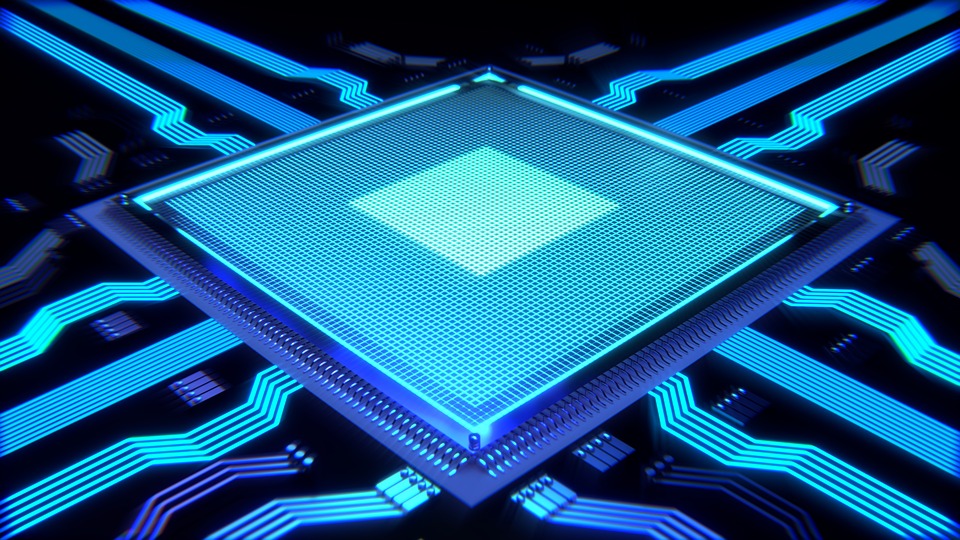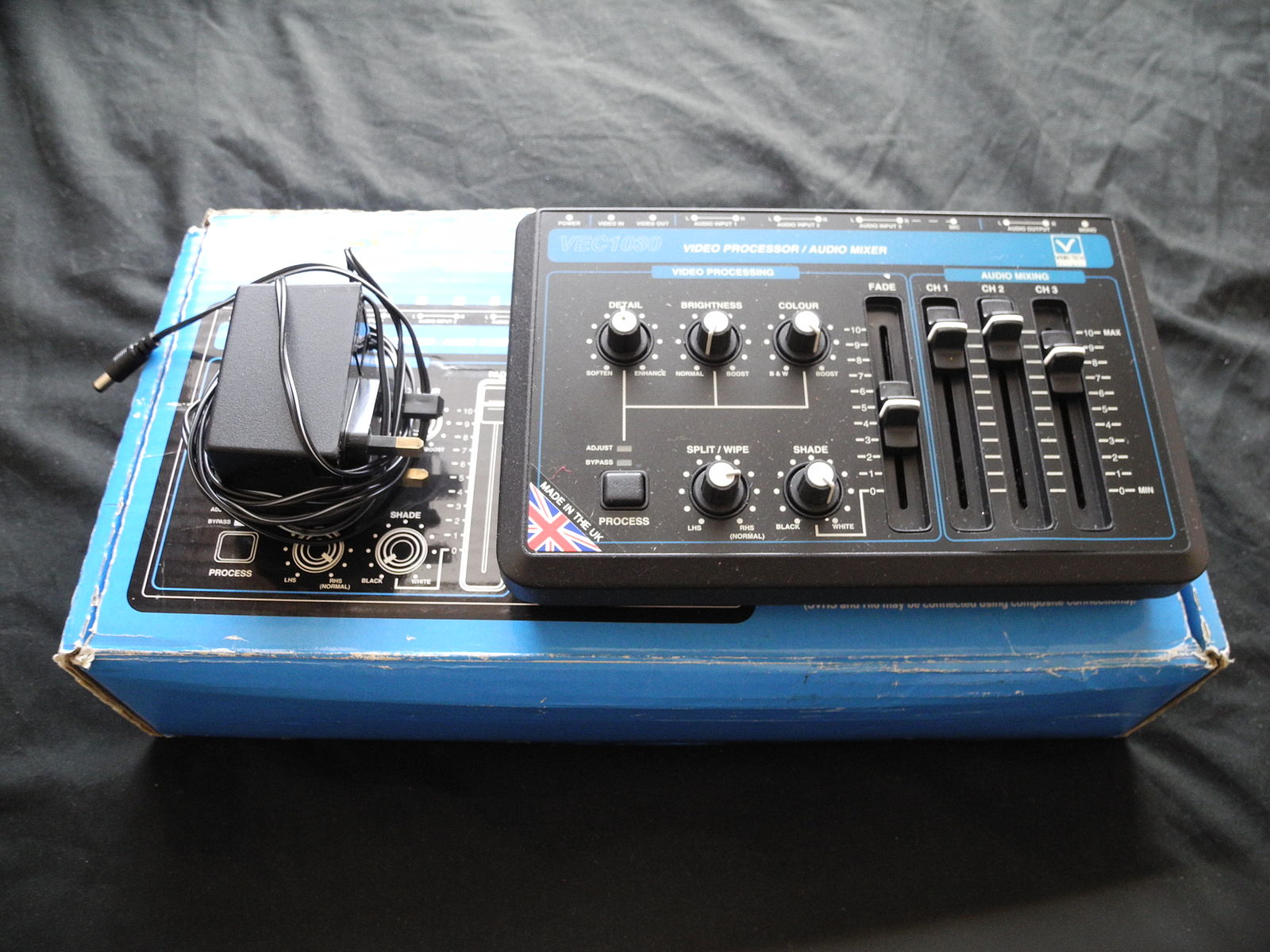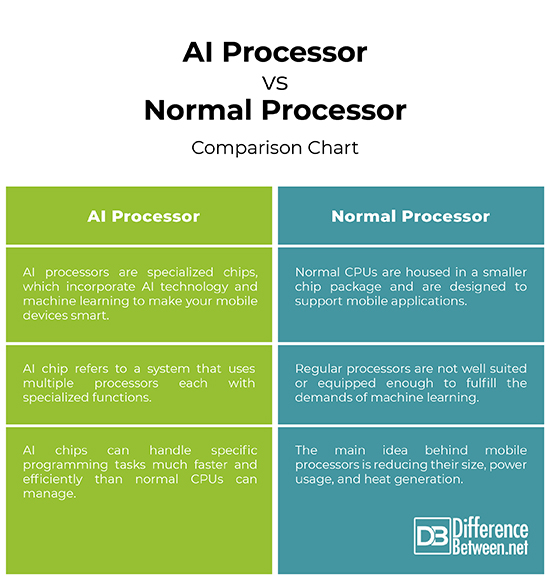Difference Between AI Processor and Normal Processor
The IT industry has witnessed a lot of transformations in the past and the latest in a wave of new technological breakthroughs is “Artificial Intelligence” (AI). That being said, no technology has evolved as fast as AI is moving in the present digital era. If you look around, almost ever company is focusing on AI today. Terms like bots, personal assistants, machine learning, and mobile processing are some of the hottest buzzwords that you must be hearing around AI. AI is the primary driver, changing almost everything, much like the Internet did a few years ago. What virtual assistants did to the smartphones on the software side, the new breakthrough technology called the AI processor is doing the same to the smartphones on the hardware side.
The mobile processors are being upgraded on a daily basis and many smartphones released recently have included AI-focused software and hardware, from iPhones to Google Pixel phones. Microsoft also announced the Intelligent edge solution with the help of various projects like Project Rome and others. AI processors in mobile seem to be the biggest technological breakthrough in mobile technology. Some examples of AI include Siri, Google Now, etc. People are now using AI to call family and friends. Today, nearly every industry utilizes some type of AI system to perform tasks that help improve efficiency. Mobile chips have become more sophisticated and advanced, especially with the inception of new AI chips. But what does AI mean in terms of mobile processing? And how does it differ from a normal mobile chip?

What is an AI Processor?
Machine learning is the fundamental concept of artificial intelligence which powers an intelligent machine and makes predictions based on their learning. AI processors are doing exactly what GPU chips are doing for mobiles, only for specialized functions rather than graphics. In general, the most impressive development in the mobile technology is related to chips, especially Neuromorphic Processing Units (NPUs) ideate to emulate the human brain. Heterogeneous computing is a term commonly related with reference to AI when it comes to mobile computing. The idea is to improve on CPU power and battery life. The new architecture means better processing power and energy-efficiency. AI chips are simply designed to do specific AI tasks more effectively and efficiently.

What is a Normal Processor?
One of the most important parts in any computer is the central processing unit, or CPU. The CPU is commonly referred to as a microprocessor, or simply processor. Processors are also used in portable devices such as mobile phones, which are generally referred to as mobile processors or mobile chips. The main idea behind mobile processors is reducing their size, power usage, and heat generation. Smartphones don’t just use processors, they use a System-on-a-Chip (SoC) – an integrated circuit with all the components on a single chip. SoC is what defines a mobile device and which not only reduces the size of the device but also reduces the cost and battery consumption. Qualcomm, Samsung, Huawei, Intel, and MediaTek are the top chipset providers for mid-to-high range smartphones in the world.
Difference between AI Processor and Normal Processor
-
Basics of AI Processor and Normal Processor
– Processors used in portable devices such as mobile phones are generally referred to as mobile processors or mobile chips. Regular CPUs found in mobile phones as well as desktop computers are like engines of your mobile devices which perform and execute anything you want your phones to do. It’s the central hub of your device and it manages every application you run on your mobile device. AI chips are the future of mobile processors that are capable of doing more than just the basic tasks your phone can do. AI chips are simply designed to do specific AI tasks more effectively and efficiently.
-
Technology
– AI processors are specialized chips, which incorporate AI technology and machine learning to make your mobile devices smart enough to imitate the human brain. AI chips are used to optimize deep learning AI workloads. Machine learning is just a way to achieve artificial intelligence. AI chip refers to a system that uses multiple processors each with specialized functions. Normal CPUs are housed in a smaller chip package and designed to support mobile applications delivering all system capabilities needed to support mobile device applications.
-
Performance
– Normal processors are not well suited or equipped enough to fulfill the demands of machine learning. AI chips have an additional Neural Processing Unit (NPU) that is capable delivering much faster AI performance and a better battery life. With heterogeneous computing capabilities, AI chips offer high performance and power efficiency for AI applications. Image recognition and processing become a lot faster so that your smartphone can perform multiple tasks simultaneously. And they can handle specific programming tasks much faster and efficiently than normal CPUs can manage.
AI Processor vs. Normal Processor: Comparison Chart

Summary of AI Processor Vs. Normal Processor
In a nutshell, regular processors simply lack the computational power to support many of the intelligent features that AI processors can manage. AI processors can handle large scale computational tasks much faster than regular processors can do. AI chips are the processors for AI-focused computing tasks with heterogeneous computing capabilities. AI processors are specialized chips, which incorporate AI technology and machine learning to make your mobile devices smart. AI chips are simply designed to do complex computing tasks more effectively and efficiently than regular processors.
- Difference Between Caucus and Primary - June 18, 2024
- Difference Between PPO and POS - May 30, 2024
- Difference Between RFID and NFC - May 28, 2024
Search DifferenceBetween.net :
Leave a Response
References :
[0]Image credit: https://commons.wikimedia.org/wiki/File:Video_Tech_VEC1013_Video_Processor_%26_Audio_Mixer.jpg
[1]Image credit: https://cdn.pixabay.com/photo/2017/04/10/07/57/processor-2217771_960_720.jpg
[2]Chace, Calum. Artificial Intelligence and the Two Singularities. Boca Raton, Florida: CRC Press, 2018. Print
[3]Greek, Joe. Artificial Intelligence: Clever Computers and Smart Machines. New York City: Rosen Publishing, 2017. Print
[4]Pathak, Nishith. Artificial Intelligence for .NET: Speech, Language, and Search. New York City: Apress, 2017. Print
